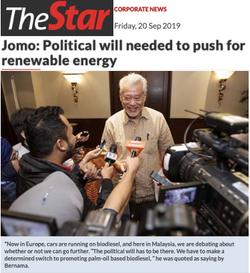- Jul 15, 2025
- 3 min read
KUALA LUMPUR, Malaysia, Jul 15 2025 (IPS) - Trump’s billionaire cronies want more monopoly profits, not competition. With more policies crafted for them, wealth concentration is set to become greater than ever.
Neoliberalism?
There is no clear consensus on what neoliberal economics stands for now. Many who claim to be liberal economists have different, even contradictory views.
Some demand market competition and oppose monopolies and oligopolies. For others, property rights are crucial, typically strengthening monopoly rights.
Many avowed neoliberals deemphasise competition and hesitate to insist on antitrust action or opposition to abuses of market power.
Property rights confer monopoly or exclusive ownership rights to an asset, typically denying access to others except for payment. Many such rights are recent.
While UK Prime Minister from 1979, Margaret Thatcher triggered a worldwide neoliberal economic counter-revolution, especially in the Anglosphere.
With generally more limited public ownership, the US economy has long been more ‘private’, offering little scope for privatisation.
Tech Big Bro
PayPal and Palantir founder Peter Thiel is the most influential of the so-called ‘tech bros’ supporting re-elected US President Donald Trump.
Thiel was the two-term president’s biggest funder for his unexpectedly successful 2016 campaign. As former boss, funder and mentor, he is now Vice President JD Vance’s godfather.
In 2014, Thiel’s ‘Competition is for Losers’ established him as the lead apologist for lucrative rentier monopolies, especially those invoking intellectual property rights (IPRs).
Thiel noted ‘perfect competition’ is “both the ideal and the default state in Economics 101”. In textbooks, firms in competitive markets are presumed to be similar, selling the same goods.
Hence, they have no ‘market power’ and must sell at market-determined prices. When demand rises, firms invest to increase supply, reducing prices and profits.
In mainstream economics, there can be no economic rent under perfect competition. But prices can be raised more easily in cornered markets.
Buyers will then have no other source to buy from. Without competition, monopolies can maximise profits by controlling market supplies and prices.
Hence, profit maximisation involves capturing more rents in monopolistic conditions. To become richer, firms eschew competition in favour of monopoly.
Government role contradictory
Tech ‘Big Brother’ Thiel notes, “To an economist, every monopoly looks the same, whether it deviously eliminates rivals, secures a license from the state or innovates its way to the top.”
The state’s role is contradictory as government “works hard to create monopolies (by granting patents to new inventions)” while enforcing antitrust law to undermine them.
Thiel claims to be uninterested in “illegal bullies or government favorites”, but surely knows governments create and sustain the monopolies he so cherishes.
He notes that “Americans mythologize competition and credit it with saving us from socialist bread lines”. But for him, “capitalism and competition are opposites”.
“Capitalism is premised on the accumulation of capital, but under perfect competition, all profits get competed away.”
The advocate of monopoly claims monopolists are “incentivized to bend the truth” and to “lie to protect themselves … [from] … being audited, scrutinized and attacked”.
Thiel unabashedly acknowledges that rentiers have every incentive to protect, disguise and “conceal their monopoly” and incomes.
Instead, the billionaire rentier wants monopoly powers and profits to grow faster without being taxed or having to share.
Monopoly best for capitalism?
Thiel acknowledges that monopolists accumulate rents in a static world.
But he insists they “invent new and better things … Creative monopolies aren’t just good for the rest of society; they’re powerful engines for making it better.”
He insists a monopoly is “so good at what it does that no other firm can offer a close substitute”. For him, “the history of progress is a history of better monopoly businesses replacing incumbents”.
The tech billionaire insists decades of monopoly profits provide a powerful incentive to innovate. Thus, monopolies continue to drive progress.
He denounces mainstream neoliberal economists as “obsessed with competition as an ideal state? It is a relic of history … Their theories describe … perfect competition because that is what’s easy to model.”
“In the real world outside economic theory, every business is successful exactly to the extent that it does something others cannot … Monopoly is the condition of every successful business.”
Monopolies thrive under Trump
Unsurprisingly, many supposed neoliberals today stress property rights while ignoring liberal economics’ claim to promote competition.
Competition is dismissed as 19th-century economic liberalism. Meanwhile, contemporary monopoly capitalism accelerates wealth and income concentration.
But Thiel exaggerates monopolies’ contribution to human progress, capitalist dynamism and innovation, while understating their considerable harms.
With the tech bros increasingly supporting the president, Trump 2.0 promises to further enrich rentiers, especially those of their ilk.
His selective Liberation Day tariffs and other policies, especially his new ‘big beautiful bill’, will significantly increase, not reduce, US government debt while deepening American fiscal inequities.
As US tariffs, wars and other distractions preoccupy the world, unwitting MAGA loyalists remain loyal to Trump and his billionaire rentiers’ ‘counter-revolution’.




















